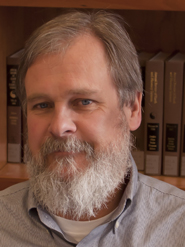
Sam Bowring’s expertise as a field geologist, his enormous breadth of knowledge, and his unwavering pursuit of the highest possible precision and accuracy in uranium-lead geochronology has transformed our understanding of the time when life began, the timing and triggers of the great mass extinctions, and the manner in which the Earth’s earliest crust evolved.
Sam determined the duration and rate of biological evolution at the Pre-Cambrian/Cambrian boundary—the so-called explosion of life that is the single most important evolutionary event in Earth history. Sam dated key volcanic strata within the sedimentary layers that record the Early Cambrian evolution of life and showed that the Cambrian period began 541 million years ago and that the Early Cambrian interval spanning the explosion of life lasted only 5 million to 6 million years. Sam showed that during this brief time interval more phyla than have ever since existed on Earth came into existence. This represents a truly profound and astonishing new discovery about how life evolved on Earth.
Sam has also established the timing and duration of the most significant biological extinction event in Earth history—the one defining the end of the Permian. Sam and colleagues have demonstrated that the extinction occurred in a time interval of less than 60,000 years and that the surge in light carbon predates the extinction by only 10,000 years. Having now established the precise timing of the extinction event and the global environmental crisis that preceded it, Sam has provided fundamental constraints on the forces that led to the environmental crisis resulting in the greatest extinction in Earth’s history.
Sam’s work on the world’s oldest rocks, the Acasta gneisses, has led to a new understanding of the processes leading to the early growth of continental crust. Through his rigorous field efforts in the Northwest Territories of Canada and his geochronological studies, Sam established that the Acasta gneisses were Priscoan in age (>4 billion years old). His geochemical studies of these early crustal remnants showed that these rocks were similar to today’s arc-derived continental crustal rocks, supporting the notion that crustal recycling started early on in Earth history and has continued to the present.
—Tim Grove, Massachusetts Institute of Technology, Cambridge
It is a pleasure to recognize Sam Bowring, whose career achievements have been focused on a better understanding of Earth history. Bowring’s groundbreaking studies of the early Earth include the discovery and interpretation of the ›4.0 Ga Acasta gneisses and the demonstration of how cratons are assembled and stabilized based on integrated mapping, geochronology, radiogenic isotope geochemistry, and xenolith studies.
The Acasta gneisses, discovered by Bowring, are still the oldest recognized rocks on Earth and preserve clear evidence for its early differentiation. He was able to show that the Acasta gneisses are not anomalous with respect to either other Archean rocks or Proterozoic and Phanerozoic continental arc rocks. This interpretation required that massive crustmantle differentiation occurred early, which in the late 1980s was considered a radical departure from the conventional view. Bowring’s original work should now be viewed as seminal in our understanding of the Earth’s early differentiation.
In subsequent work on the stabilization of cratons he turned his attention to regional studies of the Proterozoic orogenic belt of the U.S. Southwest and the Kaapvaal craton of southern Africa, in addition to the Slave craton. An important aspect of understanding the stabilization of cratons concerns their thermal evolution, and thermochronologic studies of lower crustal xenoliths were used to deduce their thermal histories, from assembly to growth of a cold, buoyant lithospheric root.
In summary, Sam Bowring is a pioneer in this field who has left an indelible mark on our understanding of the history of Earth and its biosphere. Sam, along with his students and postdocs, has amassed a compelling wealth of data that chronicles the processes and history of events involved in differentiation of the early Earth. Norman L. Bowen, dedicated experimentalist who cut his teeth on Precambrian rocks in the Canadian Shield, would surely applaud Sam Bowring’s receipt of the Bowen Award.
—John P. Grotzinger, California Institute of Technology, Pasadena

Understanding the tectonic setting in which ophiolites form is necessary to determine how they can be used to study ocean spreading and subduction ...




